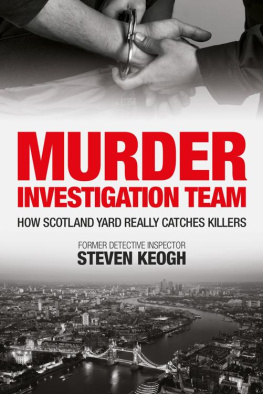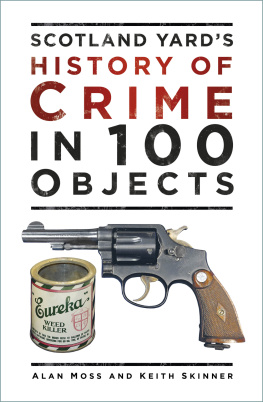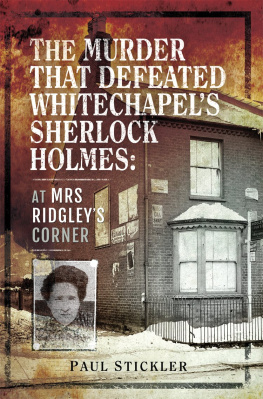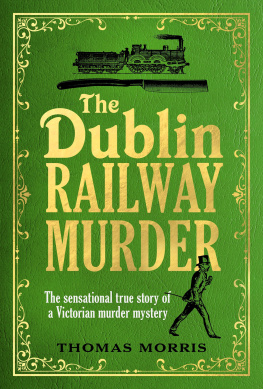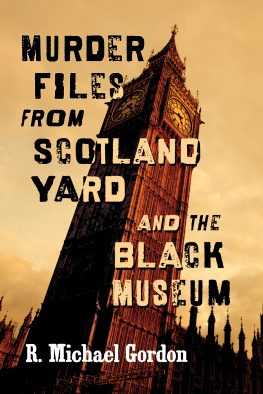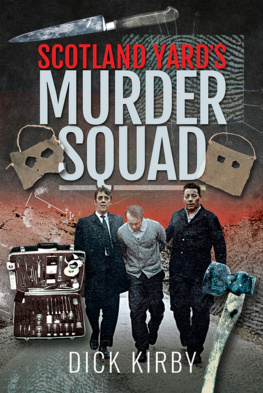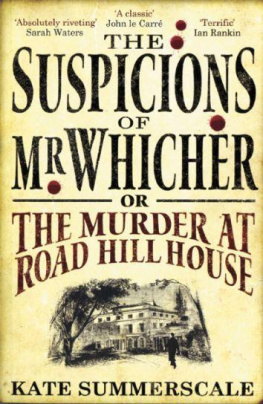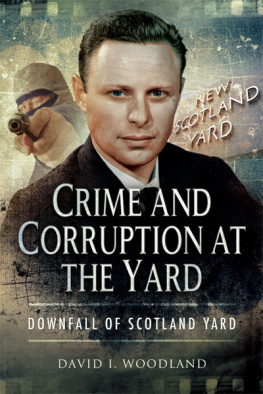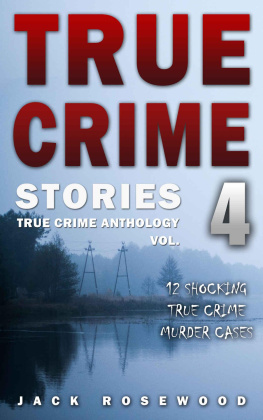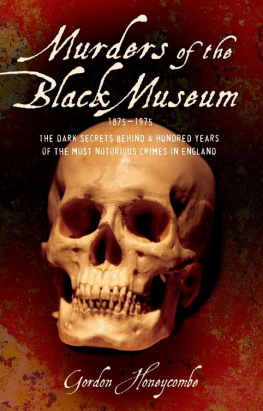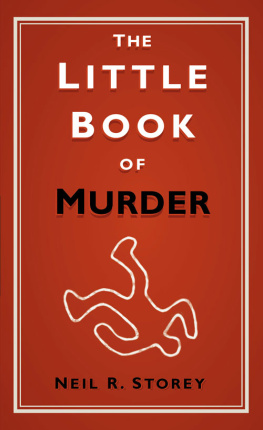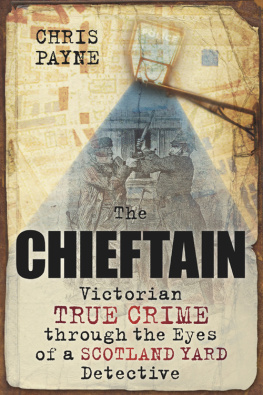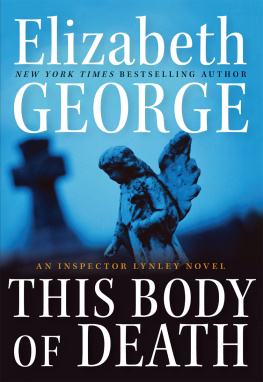
Copyright 2021 by Steven Keogh
All rights reserved. No part of this book may be reproduced or used in any manner without written permission of the copyright owner except for the use of quotations in a book review. For more information, address:
First paperback edition November 2021
Book design by Andy Meaden meadencreative.com
Book Edit by Sarah Busby
Proofread by Andrew Dawson
ISBN 978-1-7398399-0-1 (paperback)
ISBN 978-1-7398399-1-8 (ebook)
www.murderacademy.com
DEDICATION
I dedicate this book to all those on MIT, who give everything in
the pursuit of justice for those taken from this world.
And to the loved ones left behind. Your courage is truly humbling.
CONTENTS
Author Preface
If youre reading this, Im guessing that you have an interest in all things murder. You may even describe it as a fascination. Well, youre not alone. Thats something we both have in common.
Peoples interest in murder is not a new phenomenon, and its certainly not niche. Edgar Allan Poe published the first detective novel in 1841, The Murders in the Rue Morgue. Since then, the subject has spawned thousands of films, TV shows, books, board games, video games and podcasts. Serial, one of the very first true crime podcasts, set a record-breaking 340 million downloads for its first two seasons. Its a subject that truly captures peoples imaginations.
Some of these are very good at demonstrating how a murder case unfolds, be that the intricacies of an investigation, the experiences of those left behind or even a closer look at the killers themselves and their motivations. The problem is that most are produced by people who have never been part of a murder investigation themselves. They havent lived and breathed a case from beginning to end, witnessing first-hand the trauma that murders cause. Only those at the coalface can appreciate how difficult it is to solve a case, and how much harder it is to achieve a conviction at court.
In fact, for a topic so prevalent in popular culture, it is surprising how little is actually known about the true inner workings of a murder investigation team.
In this book, I want to put that right. I will give you a unique insight into how modern-day Scotland Yard investigates murders. I will take you on a journey from crime scene to trial; through all the steps needed to take a case from the initial investigation to a conviction at court.
We will delve into a level of detail that doesnt exist elsewhere; a glimpse behind the curtain into the hidden world of a real-life detective. But this isnt just a manual on how to investigate murder. I will guide you through more than 20 murder cases that I was involved with, demonstrating how that theory is put into practice. I will also dispel some of the myths that are associated with murders, putting straight some of the glaring inaccuracies perpetuated by TV, films and books.
I served for 30 years as an officer with the Metropolitan Police. More than half of that time was spent as a Scotland Yard detective, investigating both murder and terrorism. I was part of more than 100 murder investigations, during which I built up a huge well of knowledge of how these cases are solved.
An important point to make is that every case you will read about has been to court, so I am not breaching any confidentialities. As a former officer who signed the Official Secrets Act, I wouldnt be able to publish a book that divulged any confidential information. More importantly, I wouldnt want to break the confidence of those bereaved families who we helped in the most desperate of times. It is because of this that I wont use the names of victims in this book. Through the descriptions I use, it may be possible to identify cases. It would be very difficult to write about an investigation without giving away some clues as to who the victim was. But, for me, it is important that those family members dont see their lost loved ones name in print.
Other than that, I will be honest with you about the highs and lows of a murder investigation. Scotland Yard has a fantastic record for solving murder cases, with around nine in 10 ending with someone being caught for the killing. But things arent always easy, and we didnt always get things right.
By the end of this book, you will have a true understanding of what real murder investigations involve. When you see a news report on TV about a killing, you will know what the detectives beginning that investigation will be thinking. When you see footage of a crime scene with people walking around in paper suits, you will know who those people are and what they are up to. When you hear about a murder trial, youll understand whats at stake and how fragile the situation is for both police, prosecution and the family.
But murder investigation is a huge topic; one that could fill many, many books. So, while I want to give you everything there is to know here, that just isnt possible. If, after reading this book, there is more you wish to learn, please head to www.murderacademy.com where you can delve even deeper into one of the most fascinating subjects in the world.
Steven Keogh
November 2021
CHAPTER 1
INTRODUCTION
A Journey into the Unknown
Nothing ever happens on a Monday, especially in the morning. Or so we thought. We were crewing a homicide assessment team, better known by its acronym, HAT. There are several specialist police vehicles like this dotted around London, ready to take on-call detectives to the scene of a murder or a suspicious death as quickly as possible. London is covered 24 hours a day and 365 days a year by four of Scotland Yards murder investigation teams (MITs), each ready to respond at a moments notice. In reality, though, most days you wont be called upon, which can lead to a false sense of security. Thats how I was feeling that morning. Each team spends seven days as a HAT, and this was our last. Generally, if you get through the weekend without a murder, you are OK.
In situations like this, when you think youve gotten away without picking up a new enquiry, there is one word you dont mention. It is known as the Q word. You just dont say it. Why would you? Who would tempt the gods of fate? But, that morning, somebody did. I cant believe how quiet the weekend was. In response, cries went up around the office, but half-hearted ones. It was a Monday morning, after all.
Then the phone rang. Thats what it was known as: the phone. The only people who would call us on the phone were the police control room. Surely, its just a call for advice? But as soon as my colleague starting speaking, I knew it was much more than that. I knew that look; that tone of voice. Another murder on the streets of London. We waited for the call to finish to be told more. It was a stabbing. A woman had been killed in a shopping area in South London. On a Monday morning? That made no sense. My immediate thoughts were of an argument in a shopping queue or a domestic incident. At that stage, we had no idea it was something far more unusual and extremely tragic.
We gathered what we would need and headed to our car. We had to get to murder scenes quickly, otherwise important evidence could be lost. We drove using blue lights and sirens. Its difficult to talk in a car with that much noise around you so there wasnt much conversation. We were all deep in thought. I couldnt say what my colleagues were thinking, but I always used these journeys to focus my mind on what was to come. Ive been to dozens of crime scenes, but I still now experience the same buzz that I did the very first time. I always knew that, if the feeling went, it was time to move units.
Next page
